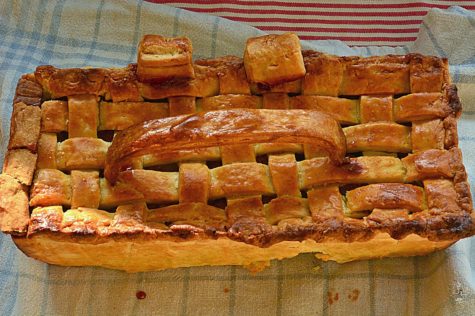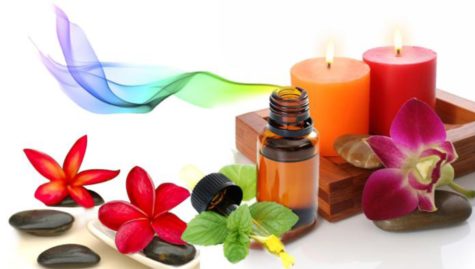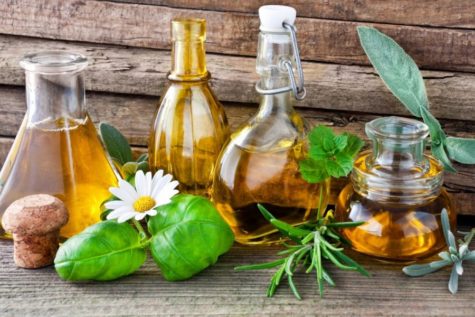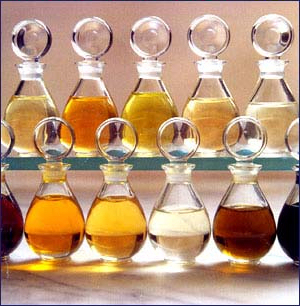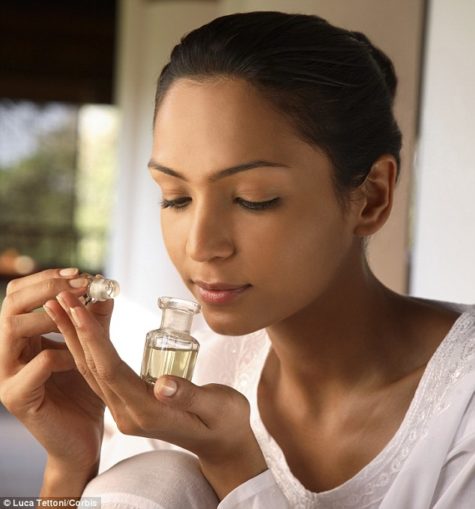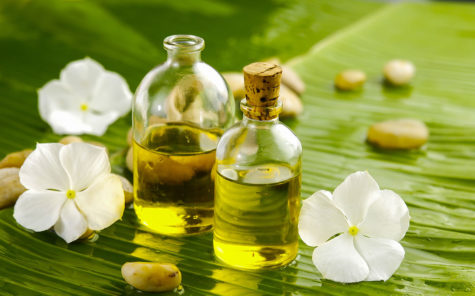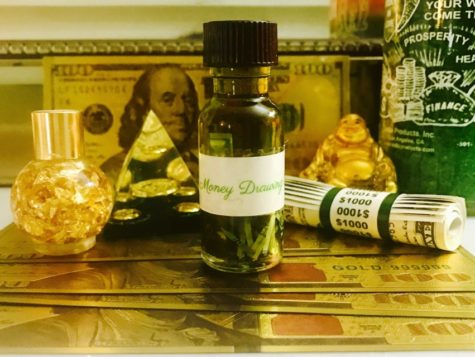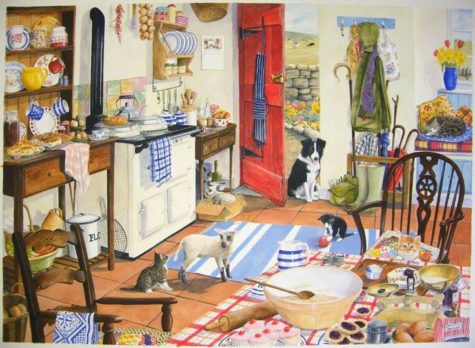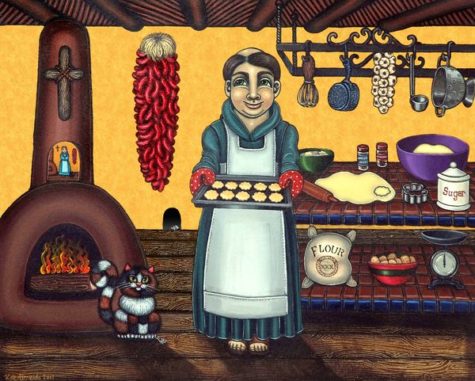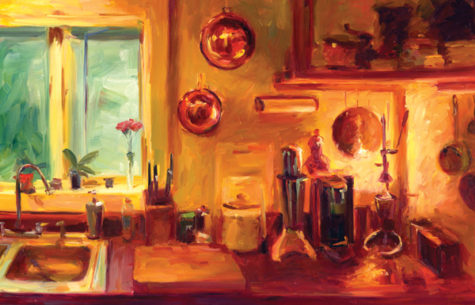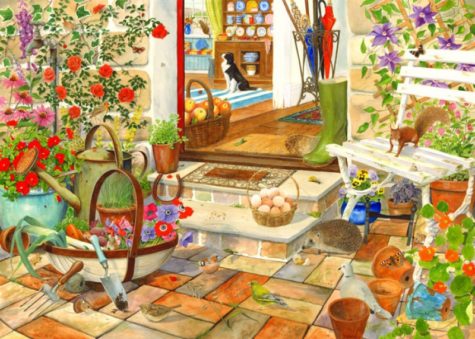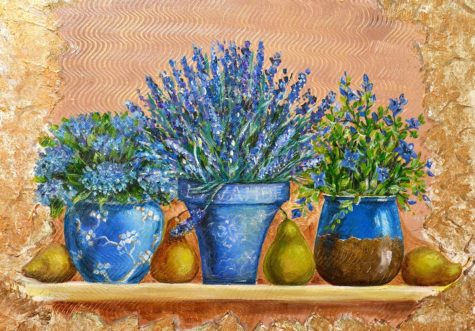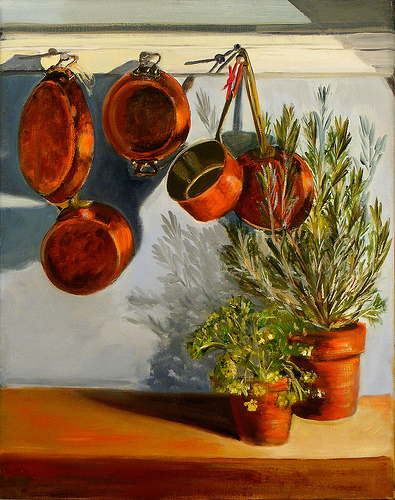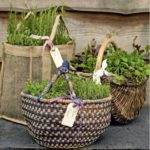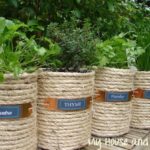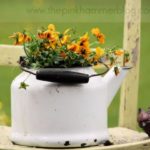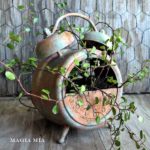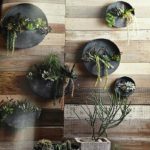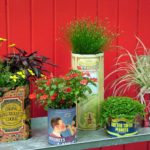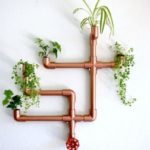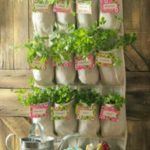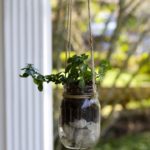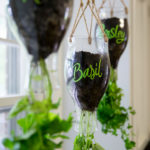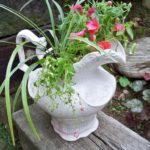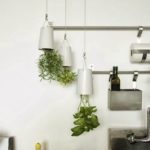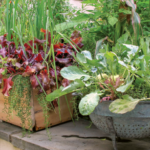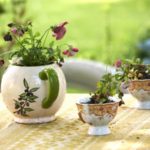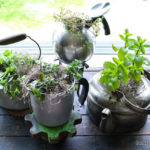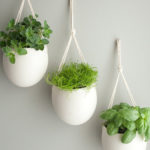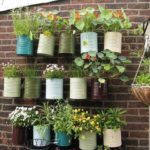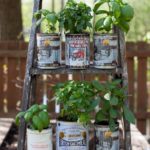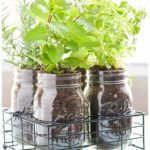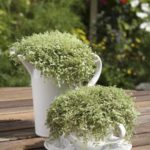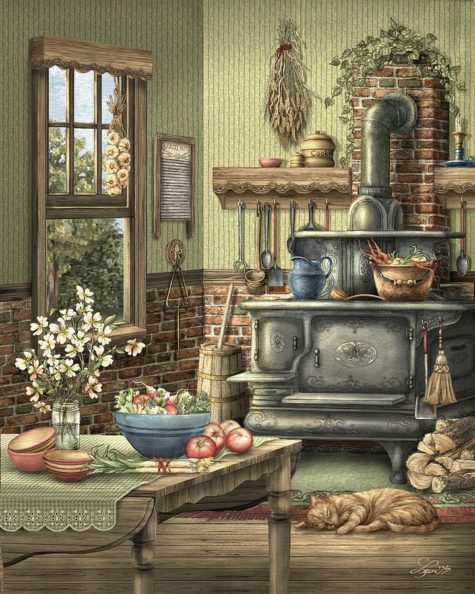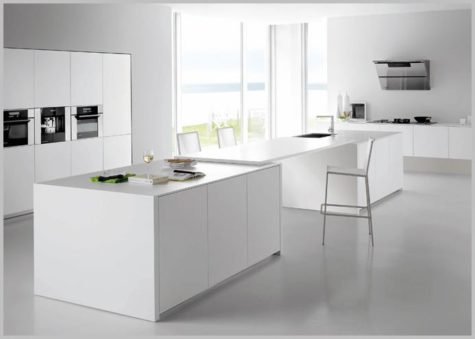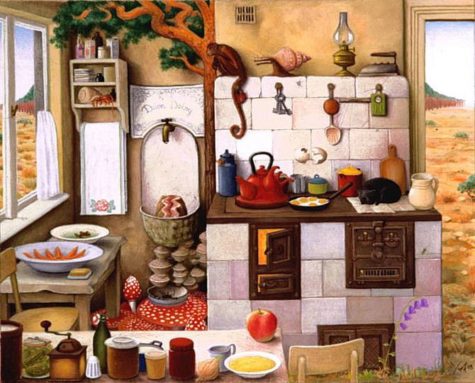Monthly Archives: September 2017
Almost A Vacation!
If we were actually rich, we’d be able to hop on our private jet and fly off to the beach whenever we wanted. Then we could relax, and live the good life, and it might look something like this:
That’s a nice fantasy, so how do we convert it into “living as if…? ” I have a few ideas.
Maybe we can’t actually jump on a private jet and fly off to a secluded island or amazing beach, but what we can do is relax and enjoy a video or two… maybe even hang out in a cool hammock, have a picnic, enjoy a fancy beverage, make a cool meal, and imagine that we are actually there.

Here is a relaxing “almost a vacation” YouTube video:
But wait… Hammocks are the ultimate symbol for the outdoor rest fan. They’re portable beds, easily strung up between two sturdy long structures from trees to poles.
Instant Hammock in 9 easy steps:
Here’s how to make a hammock in a minute from a sheet or any big piece of cloth. It’s the simplest method, and does not require a sewing machine or any complicated directions… here ya go:
First bunch up the ends and tie knots in them as shown. If you don’t have much cloth, are skilled with rope, or don’t care if you fall you can skip this step.

Next, tie a rope to each end with a lark’s head knot, just like this, or tie whatever knot you like best. If you don’t fall it means you did it right.
Hang it up, get in, and relax in utter comfort. For extra coziness pull the hammock around you like a cocoon. And since you can hang it up indoors as well at out, why not enjoy some relaxing waterfall and jungle sounds.
For a Working Vacation:
So if your budget doesn’t allow for a bonafide working vacation at the beach, you can use your hammock for a workstation for large drawings, or if you are painting a cool mandala on the floor, or anything else you can think of that would be fun to do in the comfort of a hammock…
If you do have to work, be sure to have this video playing so that you can pretend that this is a super cool hideaway… complete with beach and waterfall:
Outdoor fun:
Here is a cool triangular hammock. It’s a bedspread tied at the corners to three trees.
Helpful tips:
A king size sheet is a good size for an adult. Your local thrift store has used sheets in fun patterns for cheap, just give them a good wash.
Yes, the tutorial images show how easy it is to make a hammock, but they don’t look all that luxurious. So here is a small collection of images that might give some ideas on how cool it could look given the right choice of fabric. Say, for example, a super cool king size bedspread…
Now add some cool outdoor decor, some fun lighting and voila!
A Picnic
Why not have a nice little picnic to go with our relax at the beach theme:
Here’s a list of items you don’t want to forget to bring to your nifty picnic lunch!
- Frozen Bottles of Water
The main rule for outdoor eating is to keep hot foods hot and cold foods cold. Ice packs will get the job done, but frozen bottles of water do double duty. After they melt (and the food’s been eaten), you’ll have cold drinks on hand for everyone.
- Corkscrew/Bottle Opener
If you’re packing wine, beer, or bottles of soda, be sure to toss a corkscrew with a bottle opener in your bag. (Bonus points for packing plastic cups with sturdy, flat bottoms too.)
- Wet Wipes
Pre-moistened wipes will keep hands clean and help clean up sticky spills, even if there’s no running water nearby.
- Salt and Pepper
Seasoning is a small thing, but goes a long way in making your picnic feel more thoughtful—especially if you happen to be eating fried chicken.
- Paper Towels
You never know when you might have a big spill on your hands. And a roll of paper towels won’t blow away like a stack of napkins will.
- A Tray
If you’re eating on the ground, a lightweight plastic or enamel tray will provide a smooth surface to prevent drinks from toppling over.
- Serving Spoons
Cutlery is essential, of course, but don’t forget a large spoon or two for serving food.
- Folding Knife
A small folding knife will come in handy for a variety of jobs, and is essential if you’re serving meats and cheeses.
- Cutting Board
A lightweight cutting board is also a good idea if cheese is on the menu, or if you’re slicing sandwiches or fruit.
- Trash Bags
Always throw a trash bag or two in your bag for easy clean up when the picnic’s over. Even if there are plenty of trash cans nearby, your own bag will save you from having to walk back and forth to throw everything away.
Don’t have a nifty place to go for a picnic? Easy peasy! Just play this video and pretend. It doesn’t even have to be a beach, it could be a beautiful waterfall in the heart of the rainforest.
All this traveling around from beach to rainforest is making me hungry. Here’s a cool recipe for a picnic basket pie.. super cool… not so easy to bake, but definitely worth the effort.
I saw this on The Great British Baking Show, and I’ve been wanting to try it ever since.
Picnic Basket Pie
Ruby’s Picnic Basket Pie recipe appears in the The Final episode of Season 2 of The Great British Baking Show. It’s a savory pie filled with layers of deliciousness. Here’s a pic of what it looks like inside that yummy little picnic basket pie.
This recipe is for a savory pie, but I think it would be equally yummy if it had layers of apples, walnuts, and cinnamon. The most important aspect when it comes to the filling is that it not be juicy. If it gets juicy while baking, the crust will be soggy. So if you opt for a fruit and cheese filling – cook the fruit first.
Ingredients
For the pastry:
- 600g/1lb 5oz plain flour
- 300g/10½oz unsalted butter, at room temperature but not soft
- salt
- ½ tsp baking powder
- 50ml/2fl oz milk, to brush
- 1 free-range egg, beaten, to glaze
For the roasted vegetables:
- 2 tbsp sunflower oil
- 2 medium red onions, chopped
- 2 garlic cloves, in whole cloves, skin on, lightly crushed under fork
- 3 Romano red peppers, chopped
- 1 large courgette, chopped *(see note below)
- 1 aubergine, chopped into 1cm/½in cubes *(see note below)
- salt and freshly ground black pepper
For the filling:
- 100g/3½oz couscous
- 90g/3¼oz sun-dried tomato paste
- 250g/9oz halloumi *(see note below)
- 100g/3½oz mozzarella, grated
- small bunch fresh oregano
- small bunch fresh basil
For the caramel
- 100g/3½oz caster sugar
Directions
Preheat the oven to 200C/400F/Gas 6.
For the pastry, rub the butter into the flour using your hands until it resembles fine breadcrumbs. Add 150ml/5fl oz water and bring the mixture together to form a dough (be careful not to overwork it). Wrap the dough in cling film and leave to rest in the fridge while you prepare the filling.
For the roasted vegetables, lightly oil a roasting tray with sunflower oil, and arrange the onions, garlic, peppers, courgette and aubergine on the tray. Toss to coat the vegetables in oil.
Roast for 30-40 minutes, or until the vegetables are tender. Season with salt and freshly ground black pepper. Set aside to cool.
For the filling, put the couscous in a bowl and add enough boiling water to just cover it. Cover the bowl and let it stand for 5-10 minutes.
When the water has been absorbed, use a hand-held blender to blend half of the couscous with the sun-dried tomato paste. Combine with the unblended couscous. Season with salt and pepper and set aside in the fridge.
Slice the halloumi, pat dry with kitchen paper and dry-fry until brown spots appear. Flip it over and fry the other side in the same way. Leave to cool.
To make the pastry basket, divide the pastry dough into four portions: 350g/12oz for the case, 300g/10½oz for the lattice ‘basket’, 150g/5½oz for the lattice lid, and 100g/3½oz for the handle and other extras.
Roll out the pastry dough for the lattice to about 3mm thick, keeping the pastry cold (return it to the fridge for five minutes to chill if required).
Cut five strips 2cm/1in wide. The strips need to be long enough to go down one side of the tin, across the width of the base and up other side of tin, leaving a slight overhang each side. The strips will be about 25-30cm/10-12in long (depending on the size of the tin).
Lay the strips inside the tin – spacing the strips evenly along the length of the tin.
Cut four strips also 2cm/1in wide and the same length as the tin (two strips for each long side of the tin). Place one strip flush with the tin’s base and the other about two-thirds of the way up. Weave the strips in an out of the vertical strips to make a lattice. Where the strips overlap, brush with a little water or milk and press into place.
Freeze the tin with the lattice inside.
Meanwhile, roll out the pastry for the case into a rectangle big enough to line the base and sides of the tin. Transfer the pastry rolled pastry to the fridge to rest.
Make a rectangular lattice for the hamper lid, cutting long strips of pastry, and interweaving them (it’s best to do this on a baking tray lined with greaseproof paper). Leave small gaps between rows so there are holes in the lid where any steam can escape during cooking. Rest the pastry in the fridge.
Make a basket handle and two buckles out of the remaining pastry (you can mould the handle over a piece of scrunched up tin foil). Transfer to the fridge to rest.
Brush the inside of the frozen lattice with milk and line it with the rolled pastry case, pressing lightly to stick the case to the lattice. Rest it in the fridge for 15 minutes.
Remove the garlic cloves from the cooled roasted vegetables and discard.
To fill the pie, lay half of the couscous on the bottom (this will soak up any liquid) and pack it firmly by pressing it down. Layer the vegetables, halloumi and grated mozzarella on top. Sprinkle over the oregano and basil. Top with the remaining couscous, again pressing down. Make sure all layers are tightly packed.
Brush the edges of the pastry with milk, then slide the lattice lid into place from the greaseproof paper. Press the edges to seal. Brush the top of the pie with beaten egg.
Bake for 50 minutes.
Bake the pastry buckles, hinges and handles separately for 10-15 minutes towards the end of the pie’s cooking time.
Remove the pie from the tin and brush the sides with beaten egg. Return it to the oven and bake for another three minutes. Remove from the oven and leave to cool.
For the caramel, melt the sugar in a pan with a couple of tablespoons of water. Do not stir. Let it reach a light golden-brown colour.
Dip the handle ends and buckles into the caramel and stick them to the pie (caution: melted sugar is very hot. Take care not to burn yourself). Hold in place while the caramel sets.
Tips/Techniques
- Equipment and preparation:
You will need a 900g/2lb loaf tin (preferably with straight, rather than curved, sides) and a hand-held blender.
Notes:
- What is a courgette?
Zucchini (/zuːˈkiːniː/, American English) or courgette (/kʊərˈʒɛt/, British English) is a summer squash which can reach nearly a meter in length, but is usually harvested immature at 15 to 25 cm (6 to 10 in). In the British Isles, a fully grown zucchini is referred to as a marrow.
- What is an aubergine?
Brit term for what is called an Eggplant in the US. Also refers to the deep purple color associated with the commonly available type of eggplant.
- What is Halloumi?
Halloumi is a Cypriot firm, brined, slightly springy white cheese, traditionally made from a mixture of goat and sheep milk, although these days cow’s milk is also used.
Here’s a pic of the finished basket:
Cocktails anyone?
Sweet and fruity with a hint of coconut, it is just the thing to sip on a warm beach while you watch the waves come in.
Fantasy Island Cocktail
Ingredients:
- 2 ounces coconut rum
- 1 ounce melon liqueur
- 2 ounces pineapple juice
- Pineapple chunk
- Maraschino cherries
Directions:
Combine rum, melon liqueur and pineapple juice in an ice-filled shaker. Shake well, strain into martini glass. Granish with pineapple wedge and cherries.
Makes one drink
Beach Art
I also thought it might be fun to browse google for beach art, and find some images to use as wallpaper for my computer, or my phone. Maybe I’ll even post some as a “where I’d rather be” on Facebook. Do you see anything you like?
Not big on the beach art? No worries… here’s some cool hammock art to choose from:
Sources:
Aromatherapy for Prosperity
Pure Essential Oils have used in aromatherapy for thousands of years to attract riches and wealth for body, mind, spirit and emotions. The traditional use of aromatic oils to attract prosperity into one’s life has been practiced for thousands of years by some of the world’s most renowned cultures.
Aromatic wealth attraction formulas have often been inherited through one’s family lineage as a practice for passing on a wealthy family’s prosperity consciousness and to ensure the family’s continued attraction of riches.
Many of these Prosperity Oils are considered “holy” oils and have been used traditionally in sacred healing rituals, as well as ceremonial rites of passage and purification, to prevent and cure disease and for wealth attraction.
Prosperity oils are mood enhancers and aphrodisiacs which promote good feelings and an aura of attraction. As you know when you feel good, good things seem to naturally come your way. Like a magnet the Prosperity Oils work to help you attract wealth and abundance into all areas of your life.
Prosperity oils work on all four levels of being: physical, emotional, mental and spiritual. Their application either alone or in a synergy blend amplifies your electro-magnetic energy field and aligns you with the ‘sattva’ higher frequency energies of prosperity consciousness for wealth attraction.
Many of the Prosperity Oils are Spice Oils known for their strong curative properties. Throughout history health has been considered the most valuable commodity one could have. So any means to ensure continued “good” health was always highly valued and vigorously sought out.
Additionally for centuries Spice oils from the orient were traded as valuable commodities on the world market and considered more valuable than gold.
The Prosperity Oils are known for their powerful resonance with the frequency of wealth and reputed to attract wealth and abundance to those who use them.
You can use the recommended pure essential oil alone or in a synergy blend with other prosperity oils to enhance their results and increase your prosperity consciousness for wealth attraction.
Key Prosperity Oils
- Cinnamon (Cinnamomum Zeylanicum)
It has a long tradition of use, having been produced in Sri Lanka for more than 2,000 years. Historically cinnamon oil was used in the Middle East and Orient for combating viruses and infectious disease. Cinnamon Oil dates back to the Egyptians! The essential oil promotes a healthy immune response, and may help maintain a healthy lifestyle regimen. Brings feelings of joy.
Caution: Cinnamon oil is suitable for skin application in weak dilutions of less than 1%.
Note: Cinnamon oil is made two ways, one with the bark and the other with the leaves. For the purposes of prosperity, I don’t think it matters which you choose. If you are using it medicinally, it might be good to do some research.
Cinnamon is said to attract wealth by transforming our core beliefs of limitation into abundance. It will release anger, frustration and abuse that we have buried that deal with our dependence and addictions.
It is good for those of us who really want to look at and change their belief systems or their old patterns. This will help those who need to release memories of physical abuse (including slavery) whether it is this life or a past life.
- Myrrh (Commiphora myrrha)
Myrrh is a very powerful antioxidant making it supportive for healthy skin. It opens our mind to receiving gifts. The benefits of Myrrh include the spiritual and emotional as well. Myrrh is very spiritual oil and has been used in religious ceremonies and rituals for over 5000 years!
Traditionally myrrh oil has been used for enhancing spiritual and emotional well-being. It is an excellent aid to the healthy functioning of the limbic (emotional center) of your brain.
In the Christian tradition, Myrrh was given to Baby Jesus along with Frankincense and Gold. So, Myrrh and Frankincense were considered luxury items used by the wealthy and highly regarded next to gold.
Myrrh releases fears, difficult experiences as it relates to us or the world. It asks us to be more accepting, trusting and non-judgmental of ourselves.
When we can love and trust ourselves more, than we don’t attract situations that are as painful and we learn to integrate our physical with our spiritual being.
Because this oil opens the heart chakra and is uplifting to the mind, it can relieve stress and relax the body. Place on the heart to release this patterning and embrace relationships (self and others).
- Spikenard (Nardostachys Jatamansi)
A valued oil since ancient times spikenard has often been used in anointing rituals and religious ceremonies. It was the foot balm Mary Magdalene used to anoint her master’s feet in the New Testament of the Bible. For centuries, Spikenard has been used traditionally in Ayurvedic health practices native to India, and was historically used to anoint those of high honor.
One of the greatest benefits of Spikenard oil is its uplifting aroma that can help promote feelings of relaxation and calmness. Throughout history, Spikenard has commonly been used to manage and uplift mood, or to help promote relaxation. Today, Spikenard oil can be helpful for promoting calm, relaxing, or uplifting feelings when used topically or aromatically.
Not only is Spikenard oil known for its uplifting properties, but it is also a very grounding oil. The grounding properties of Spikenard essential oil make it a popular choice for aromatherapy and meditation. The woody, musty scent of Spikenard oil makes it a useful oil for aromatherapy and massage, while the grounding properties make it useful for promoting relaxation during meditation.
Spikenard oil can be applied topically to help promote calm or relaxing feelings. When you want to experience the calming benefits of Spikenard essential oil, apply one or two drops to the temples or back of the neck. Before applying Spikenard to the skin, consider diluting the oil with Coconut Oil to help minimize skin sensitivity.
- Sandalwood (Santalum Album)
A known aphrodisiac sandalwood oil is used extensively in Indian temples, as well as in churches around the world in religious ceremonies for worshiping the divine.
Used for centuries in Hindu, Buddhist, and ancient Egyptian ceremonies, burning sandalwood was thought to relieve depression and restlessness, promoting spirituality and inner peace. The fragrance is still used today in funeral rites to instill comfort and acceptance among mourners.
Paradoxically, sandalwood oil has also been shown to be both soothing and stimulating. When used topically, sandalwood oil was found to have relaxant properties without causing drowsiness, according to research published in 2004.
- Ginger (Zingiber Officinale)
In the first century AD, ginger was exported to Europe via India as part of the lucrative spice trade. Ginger was used extensively by the Romans.
Ginger is one of those herbs that has a long history in East Asia for bringing luck. The oil can be rubbed on money, helping you to remember not to “burn” through it – the heat of the oil is thought to counter the ‘fire’ you feel to spend!
Supportive of the digestive system, ginger is commonly used to soothe, comfort, and balance digestive discomfort. Emotionally it gives us courage.
Did you know that the West African women in Senegal weave belts of ginger to arouse sexual interest in their partners? Wow, that’s interesting!
Its spicy and sweet aroma makes one physically energized.
The benefits of ginger are not lacking in the spiritual side of things either.
As a matter of fact, Ginger addresses “lack” and therefore would assist those who need self-confidence and motivation to put plans and ideas into the physical realm. In other words, it allows us to “digest” parts of ourselves that need to be changed so we can better serve ourselves.
We know that ginger has an aphrodisiac effect on the body as well. Therefore, it opens the root and sacral chakras and will release suppressed sexual energy.
- Spruce (Picea mariana)
Spruce oil is physically grounding and relaxing. Has a sweet and earthy scent that is fresh and fruity. It is also said to release blocks to prosperity and wealth.
Native Americans used Spruce for its purifying and cleansing effect as well as for medicinal, spiritual and practical reasons. They used it for protection and capturing the universal energy here on earth the earth plane.
Spruce essential oil will ground and balance the body and release emotional blocks.
By the way, any of the oils that are from trees (Western Red Cedar, Palo Santo, Cedarwood, Frankincense, etc) will provide stabilization, grounding and security to our being, physically and emotionally.
- Cedarwood (Cedrus atlantica)
This intense, deeply sensual scent goes hand in hand with attracting power to your life. It’s also a scent commonly associated with beauty and prosperity, likely due to the sensual and grounding notes in the aroma.
It’s also often considered a protective essential oil, so not only could it attract prosperity to you, but it can also protect you from misery and misfortune.
Wear just one drop in a diffuser around your neck, or anoint a single drop over your heart to help bring out your inner beauty and strength. You don’t want to overdo this powerful scent, and a single drop is plenty to help you attract the prosperity you desire into your life!
If you are feeling in any way tense, stressed or depressed try inhaling cedarwood essential oil from the bottle or put a few drops on a handkerchief and breathe it in whenever you feel the need. You can also get all the benefits of its aromatic properties by diffusing cedarwood essential oil in a diffuser machine.
- Patchouli (Pogostemon Cablin)
This oil has been used to relax the mind and clarify thoughts for hundreds of years. Originating in southeast Asia patchouli has been used for thousands of years. The early European traders were reported to have exchanged one pound of patchouli for a pound of gold.
An earthy, intense oil that helps inspire happiness and optimism. It can help sharpen your wits. It reestablishes mental and emotional equilibrium and energizes the mind.
Patchouli Essential Oil is primarily used to align the heart chakra with the root and sacral chakras. It does this by releasing obsessions, insecurities and jealousies and enhancing our desire to live a fuller life.
It also grounds the body and asks us to stay in the present moment rather than stressing about things that are beyond our control.
Much like bergamot, patchouli essential oil often has connections with attracting money. Supposedly, it’s also an oil that has the ability to attract love into your life… so you may want to mix up a little into your own custom perfume blend before you go out for the night!
- Bergamot ( Citrus bergamia )
Bergamot’s effects are uplifting as well as relaxing. It opens up the heart chakra, and allows you to release your need to be in complete control of a given situation. Does it really bring you success and money? Maybe – although it’s probably more related to your own confidence and uplifted state of mind!
Diffuse bergamot oil to bring yourself success and money – or add a drop to your wallet, while envisioning your wallet filling up with cash!
Another way is to anoint yourself with it to bring success and money – meaning add a drop to your finger tip, then rub it on each wrist, and a little bit on your forehead.
- Sweet Orange (Citrus Sinensis)
Orange Essential Oil is rich in the powerful antioxidant d-limonene and aids in maintaining normal cellular regeneration. Also has calming effects and may be used for feelings of peace.
Mentioned in Chinese literature in 314 BC oranges make a wonderful nerve tonic. A happy oil with the scent of sweet oranges promotes relief of physical and emotional tension.
Caution: May cause photosensitivity. Avoid exposure to direct sunlight after skin application for up to 12 hours.
Its fresh and citrus aroma is very uplifting to the body and mind.
Orange Essential Oil uses include the spiritual and emotional realm as well. Orange releases self judgment, obsessions and fears so the emotional body can be restored and balanced. When we release these negative and highly charged emotions we can see clearly again and make better choices for our life.
It will lend support by uplifting and promoting a positive attitude while calming our spirit. This oil will help those who tend to overwork, strive for perfection, but get aggravated quickly by intolerances or mistakes.
- Galbanum (Ferula Galbaniflua)
Traditionally galbanum has been used for making incense and is mentioned in the Book of Exodus 30:34 for this purpose. The ancient Egyptians highly favored galbanum as a holy plant aromatic and the reputed “green” incense of ancient Egypt is thought to be galbanum.
This magickal essential oil empowers positive sacrifice in the sense of giving up in order to change for the better. It also assists in one’s exploration of the self, but what it reveals can be shocking. This scent has traditionally been used for acquiring magickal skills such as divination, contact with angels, and communicating with the dead.
- Frankincense (Boswellia Frereana)
One of the ‘Holy’ oils from ancient times when it was considered more valuable than gold, frankincense oil has a powerful and enticing sweet, balsamic and warm wood aroma that sweetly sparkles with freshness and a hint of spice and incense-like overtones. It is uplifting and centering.
This precious oil was found in King Tut’s tomb in Ancient Egypt.
Frankincense Essential Oil helps to uplift mood and brings feelings of relaxation. It may help smooth the appearance of healthy-looking skin, and is useful in combination with massage after exercise.
Frankincense oil has been used to awaken our spiritual awareness and connect with spirit for 5000 years or more. It will help us release parts of our ego which hold us back from connecting with our soul, as well as feelings of unworthiness and insecurity.
Once we are able to connect with our spiritual side, we can embrace our true purpose in the world and become more spiritually driven rather than ego driven.
Use Frankincense during meditation to connect with spirit and stay centered in meditation.
- Clove (Eugenia Caryophyllata)
Clove bud oil shares similar antiseptic and anti-microbial qualities as cinnamon leaf oil. Use clove oil to help restore the loss of your inner drive and motivation. Its hot and spicy aroma brings clarity!
Caution: Clove oil is known to irritate the skin and mucous membranes and generally not for use in skin except in extremely weak dilutions of less than 1%. Please respect the power inherent in clove oil and use with extreme care.
Promotes a healthy immune response, and may support overall wellness. An important ingredient in Young Living’s Thieves blend, its principal constituent is eugenol.
Clove oil uses includes the spiritual realm as well. Clove is said to provide insight into our emotional discomfort.
How many times have something has happened only to find out later there actually was a hidden meaning behind it?
For me, all the time! But it was about eight years ago that I realized that every time I really just didn’t want to go to work that day, I would manifest something that would self sabotage!
We all have days like that, but that was how I learned to “take a day off”. I wasn’t honoring that I needed a day off and needed to just take it on my own! That taught me how to be nourishing to myself.
So, clove can help us in this respect. It helps us reflect on the causes of our sabotage; and assists us in releasing them because they no longer serve us!
Using These Essential Oils
Plant aromatics have been used for thousands of year to enhance one’s prosperity consciousness for wealth attraction. The ways to use the different essential oils for drawing in money, abundance, wealth, prosperity, etc. is limited only by your imagination!
- Place a drop of your desired oil inside your wallet to draw in more money while visualizing your wallet filling with crisp $20, $50 or $100 bills!
- Wear your desired essential oil(s) daily to attract money. Put a drop on your skin or clothing or create a spritzer to wear like a body spray.
- Before going to a Casino, write the name of the casino on a piece of paper or print out a picture of it and use your desired essential oil on and around the name or picture with the intention of winning large sums of money!
- Anoint your paycheck to provide increases it bring about promotions.
- Anoint a green candle and burn it, with the intention of bringing more money into your home.
- Anoint your lottery tickets and visualize yourself willing unlimited amounts of money.
- Anoint crystals, amulets, talisman and other charms that you use in your manifestations for money.
- Anoint your cash, debit cards, credit cards, store cards, etc… as you use them to spend to ensure the money will return to you.
- Anoint your purse and/or wallet with your desired oil daily so you will never be without money!
- Mass Anoint your coins to reproduce rapidly with a spritzer or even pure drops of your desired oil.
An Abundance Affirmation:
Dispense 1-3 drops of your prosperity oil or blend onto a cotton ball. Close your eyes and begin to inhale the scent of your oil. Breathe deeply and allow yourself to relax. As you continue to breathe and inhale the scent of you oil your cellular respiration will deepen and your brainwaves will begin to slow down to a relaxed alpha state. When in an alpha state your subconscious mind I more open, and receptive to your suggestions.
Speak your affirmations aloud, with confidence and clear intention. Feel the spark of the divine flow of abundance, the embodiment and “consciousness of abundance” within you. And so it is!
I give thanks that I am rich and prosperous in every way.
Money flows abundantly in my life for which I am very grateful.
My abundance makes everyone better off.
I embrace abundance and abundance embraces me.
Money is my friend and ally.
I am aligned with the energy of money.
I relax into wealth consciousness.
More Ideas for Improving Finances With Essential Oils
Here are some oils that can help – patchouli oil, lemon oil, rosemary oil, orange oil, cinnamon oil. When applied to the bottom of the feet helps root the body to earth and strengthen the basic energy center.
When applied to wallet or purse helps disintegrate poverty thought forms, and negative thought about money, and increase the prosperity energy of wallet or purse. Use blessed oils on wallet, check book, and credit cards to help disintegrate negative thought forms like poverty thoughts, excessive spending, and also to help neutralize contamination from paper money and coins that may have rubbed off onto you wallet or purse.
Use lemon and orange in office in either a diffuser or spray bottle. In morning or at night when no one is around add 50 drops lemon oil, and 50 drops orange oil into 4 ounces of water or alcohol and spray on carpets, in bathrooms and in showrooms or sales offices.
The smell will help neutralize any negative smells and the smell left behind will excite people, and they should buy more. Use lemon oil in offices to help increase blood flow to the brains of workers by using lemon oil in the daytime, will also help reduce computer operator errors.
Peppermint oil in the afternoon also helps to help nourish the mental capabilities, and help give energy for the rest of the day.
Use lemon, tea tree, eucalyptus to help neutralize airborne viruses and bacteria in the air to help reduce worker absences due to illness from colds and flu.
Use rosemary or patchouli on the hands and feet to help root the body to the earth, thus expanding the basic energy center. Use small drop of cinnamon oil on the bottom of the feet.
A Magickal Prosperity Oil
Way back when we were doing our Gypsy Magick project, we made Prosperity Oil. Here’s a link to that post:
Over at the Magickal Apothecary, there are a couple of recipes using essential oils for prosperity. First we have this one: Pumpkin Seed Prosperity Oil.
And secondly, there is this one, Earth Bath:
Sources:
Kitchen Feng Shui
Your kitchen is the feng shui part of the home that nourishes and sustains life. Feng shui-wise, it is the most important part of your home. The kitchen is also a feng shui symbol of wealth and prosperity. This is why one of the first rules for good kitchen feng shui is to avoid having your kitchen close to the front door or to the back door, where the chi (good energy) can easily escape.
- We all know that the food we eat gives us energy.
For this energy to be of high and healing quality, the food needs to be prepared in a harmonious and well-organized kitchen; a kitchen that has a balanced flow of Sheng Chi, or good feng shui energy.
Good nutrition is good feng shui, so add healthy, organic foods to your diet, especially fresh fruits and vegetables. Besides the high nutritional value, organic fruits and vegetables carry strong healing vibrations from the earth; a quality of energy that your body dearly needs.
As we constantly exchange energy with our surroundings, a good feng shui kitchen leads to a good spirited chef, which, in turn, leads to good energy meals for a happy family!
Here are a few more basic good feng shui kitchen guidelines:
- The kitchen should have several levels of proper lighting, be airy and spacious, clean, bright and welcoming.
- For good feng shui, keep the kitchen simple and do not overload it with gadgets.
- Keep clutter at bay.
- Fresh flowers bring beautiful uplifting energy to your kitchen. Place a bowl with fruits, a vase of flowers, or a living plant on your kitchen table, windowsill, or wherever the layout of your kitchen allows.
Choose colors that blend well and feel good together. Feng shui-wise, the color yellow is a good choice for the kitchen, as it is good for your digestion. You can choose this color as light as “butter yellow” or as vibrant and strong as “squash yellow.”
The kitchen was considered to be the heart of the home since ancient times; use feng shui to make it a happy and healthy heart! Follow these simple feng shui tips and create a home where family and friends continue to share many beautiful moments together.
Even if your current kitchen is in a challenging feng shui location, you can still do your best by applying basic feng shui tips, as well as constantly creating good, fresh and vibrant energy full of love and care.
This good energy you create in your kitchen will come back to you tenfold, so it is an excellent investment in your health and well-being!
The location, design and feng shui basics of your kitchen are all considered very important in a good feng shui floor plan. In fact, your kitchen is part of the so-called “feng shui trinity” – the bedroom, the bathroom and the kitchen – because of its utmost importance for your health and well-being.
Location.. Location… Location…
So, what is the best feng shui positioning of a kitchen in a good floor plan and what is the worst one?
The worst feng shui positioning of a kitchen is the one where the kitchen is close to the front door and is the first view you see as you come in. Please note this does not apply to a kitchen further away from the door that you can partially see from the front entrance; this only applies to a floor plan where you literally come home through a kitchen.
Even in this case, there are better and worse scenarios. An oven that you can see from the front door, or aligned with the front door, is considered very bad feng shui. It is a bit better if you see a nice view of your kitchen, let’s say a kitchen island with some flowers on in, or a little herb garden for good feng shui.
Another bad feng shui floor plan kitchen location is a kitchen either under the bathroom or facing the bathroom door (a bathroom door in proximity to the oven or kitchen island is the worst).
The reasons here are plain common sense – the two energies should be kept apart and never mixed.
The last bad feng shui kitchen location is a kitchen very close to the staircase – these two energies are opposite each other and are best kept at a distance.
Moderately challenging kitchen locations are a kitchen very close to the laundry room or the garage, but these scenarios are much easier to work with and improve.
There are several elements that are important in the actual design of the kitchen. The designer triangle principle – where the oven, the fridge, and the sink form a triangle – is good feng shui and well-known to many. Less known, but very important feng shui factor is to avoid having your oven positioned in the way where you cook with your back to the door.
- How important is the stove or oven mouth direction for feng shui?
An important feng shui point regarding the stove location and positioning is to have the stove placed in a way that allows you to have a good view of your kitchen. Cooking with your back to the incoming flow of energy is not good feng shui.
Unless you can actually change the location of your stove, let’s say if you plan to use feng shui in renovating your kitchen soon, I would suggest not worrying about the direction of the oven mouth.
The first and most important aspect in feng shui regarding the stove is its location in the bagua map of your home.
As the stove represents the fire feng shui element, it is best to have it in a location that is compatible with or is not damaged by its fire energy. Usually, South and Southwest are considered ideal feng shui spots for the oven.
- When a kitchen door faces the bathroom door:
Having the kitchen and the bathroom doors face each other is considered very bad feng shui, indeed. One does not need to know much about feng shui to intuitively understand that this is not a good set-up for a healthy home.
When two doors are opposite each other, the feng shui energies flow very fast in and out of the spaces that are guarded by the doors. This is why another direct door alignment – the front door aligned with the back door – is also considered bad feng shui.
What you have in the case of a bathroom door facing the kitchen door is the energies of the bathroom (release, purification, letting go, etc) mingling with the precious energies of the kitchen (nourishment, cooking, warmth, love & support).
In practical terms, you have the undesirable odors from the bathroom affecting the energy of the kitchen, which is the heart of the home. In more complex terms, you also have the energies of the water feng shui element of the bathroom going against the fire feng shui element of the kitchen.
It will be harder to maintain optimum health and loving communication levels in a house with this set-up, but it does not mean you cannot do your best to even slightly improve the situation.
Your goal is to create as much division as possible between the kitchen and the bathroom, and here are 5 simple feng shui tips to consider if you cannot move out or plan a renovation.
- Always keep the bathroom door closed. This will help keep its energies from spreading into the whole home, and especially into the kitchen.
- Be sure your bathroom is always clean and a pleasure to be in, meaning it has really good feng shui energy.
- Find a creative way to define the boundary between the bathroom and the kitchen. For example, you can experiment with a divider screen, a tall plant or a bamboo curtain (if your kitchen has an open entryway) or have doors with no glass (if the kitchen doors have glass inserts).
- Choose different wall paint color on the two opposing walls — the kitchen door wall and the bathroom door wall. This can work well to define and energetically separate the two areas.
- Creating a focal point in between the two areas will draw the energies away from mingling and bring a sense of beauty. Work with big scale art and choose colors and images according to the feng shui bagua requirements for each specific area.
Once you understand what needs to be done and experiment with various solutions, you might find many more ways to improve your current situation.
If you own a home, look into the possibility of at least a minor renovation to remedy this situation. And, if you rent, you will sure be wise to avoid this set-up again! Understanding what makes a good feng shui floor plan and what is the best placement of all rooms in the house can help you make good decisions in the future.
If your kitchen is very small
The kitchen is considered the heart of the home not only in feng shui, but in many, if not all, old cultures. Feng shui wisdom adds the element of the state of your kitchen reflecting the state of your health; as well as attracting the flow of wealth and abundance into your life.
The kitchen is also a part of the very important feng shui triangle – the bedroom, the bathroom and the kitchen – which is directly connected to the state of your health and well-being.
What do you do, though, when your kitchen is very small and it seems like you can never keep it clean or find enough space for all your kitchen supplies?
If you have a difficult time with people putting things away and keeping it clutter free, it may mean that you have more items than your kitchen can accommodate.
Decide on the very minimum you can get away with and have “a place for everything and everything in its place”. I know this is much easier said than done, but see if you can pack some items away to improve the feng shui energy of your kitchen.
One feng shui decor element that usually works for a small kitchen is, strangely enough, to have some open display shelving. This little feng shui trick opens up a small, confined space and lightens the energy by creating a better flow.
Of course, with this comes the added issue of keeping the open shelves clutter free. It is good to know, though, that for good feng shui your whole space has to be clutter-free, be it visible or not.
You can also consider repainting the wood cupboards in a lighter color, such as white or pale butter yellow , whichever color works best with all the other elements in your kitchen (the countertops, the floors, etc.)
With a small kitchen smart lighting becomes crucial, so be sure to not limit yourself to one boring, energy draining typical ceiling fixture. Experiment with different levels of lighting and sense the change in energy each one of them brings. For a space to have a better quality of energy, at least 2-3 layers of lighting are recommended; this is especially important for a small kitchen.
Mirrors, of course, are one of the best feng shui solutions for small spaces and are sure called the aspirin of feng shui for a good reason! Find a way to place a mirror in your kitchen so that it brings more light and visually expands the space.
Be sure to also have some fresh energy in your small kitchen, be it a small container garden with aromatic herbs, or just some fresh fruits on display.
Most of all, keep it clean and keep it simple, and find many ways to fall in love with your very small kitchen. It is definitely possible.
Feng Shui of Kitchen Plates Shapes and Colors
Round is the feng shui shape with the most flow, or harmonious movement. This is not to say that square shaped plates are bad feng shui, not at all, just different energy, slower, more grounding.
- What colors and shapes of plates should I use in my kitchen for good feng shui?
- What plates should I use in my kitchen for good feng shui?
- Are round dishes better feng shui than the square ones?
- What color is best feng shui for plates, or does it depend on the kitchen location?
This is an interesting kitchen feng shui question, but I have to start with this: there are really no shoulds in good and successful feng shui applications.
It is always best to go with what you love and are drawn to.
This especially applies to your kitchen and your bedroom, as both places, feng shui-wise, are directly connected to your well-being; and only you know what makes you feel happy and nourished. Start with your own preferences, then see how they compare with the general feng shui guidelines.
In the course of understanding deeper levels of feng shui, you may feel drawn to make subtle (or not so subtle!) adjustments to your feng shui choices, but first always be guided by your feelings.
So, to answer your question with another question I would ask: “What plates do you like the most in your kitchen? What colors are you drawn to the most while dining?”
Personally, I use white plates, mostly round ones. I think white color it is the best energy foundation for the beauty and nourishment of the food that is served on these plates. You will also notice that good restaurants always use white plates.
To me, a clean white plate is like a fresh canvas waiting for the next masterpiece.
Round is the shape that has the most flow or harmonious movement, thus a fresh energy most suited to maintain, present and enjoy food. This is not to say that square shaped plates are bad feng shui, just a different energy that is slower and more grounding.
I guess one could say that square shaped plates make you slow down more.
Color-wise, I would say the best choice would be based on your personal preference, unless you have a big collection of dishes on display. In this case, you would like to have colors appropriate for your kitchen decor scheme, as well as for the bagua area the kitchen is located in.
Generally, blue is a good color for dishes when one is trying to lose weight; while red, orange and yellow will stimulate the appetite.
Herb Garden Tips for Feng Shui Kitchens
If you love your fresh herbs, I know you will find the best feng shui spot for the little herb garden in your kitchen. Best containers are of the earth feng shui element – try to avoid metal or plastic containers.
One of my most favorite ways to create great energy in my kitchen is with aromatic herbs.
Creating your own little herb gardens can be a really enjoyable process with numerous benefits. I enjoy cooking, so the smell of fresh herbs in the kitchen is heaven for me (great feng shui!)
I love the energy that fresh herbs bring into the kitchen.
Basil, rosemary, thyme, mint and lavender are my all-time favorites, but I also try to include something new every year. Check the 5 best herbs for a cook’s container garden for some great tips.
The vibrant, alive energy of herbs connects you to what matters the most – the simple, the good things in life. It’s a reminder of the nourishing power of the earth in all its beauty.
Growing Herbs in the Kitchen
If you want to enjoy a continuous supply of garden-fresh herbs in your own kitchen, keep these tips in mind.
- Choose plants carefully.
Opt for small-leaved herb varieties when possible, as they do the best indoors. In basil, for instance, you’ll find Fino verde, which has half-inch leaves. Some herbs naturally have small foliage, like oregano.
- Where to get the plants?
Buy established herb plants in the nursery or via mail-order, or grow your own from seeds or cuttings. You can grow basil year-round by periodically letting older plants go to seed and then scattering the seeds in the pot. To grow mint, use root cuttings.
Start herbs from seed in a soil-less potting mix in a warm location. Hasten germination and get the plants off to a good start by growing them on a seedling heat mat. Once the herbs reach two inches high, take them off the heat and repot them in regular potting soil.
- Provide plenty of light.
Most herbs grow best in a bright location, such as near an unobstructed southern window. Eastern and northern windows can also work, if you provide supplemental light from full-spectrum lighting. Western windows receive afternoon sun, but get warm and may burn foliage, especially in the summer months.
If your kitchen is windowless, grow herbs in a hydroponic growing system that comes with its own special lighting.
- Ensure air-circulation and cool conditions.
Herbs grown in stuffy, warm rooms attract pests like scale insects and mealybugs, and they grow weak and spindly.
“Herbs don’t like it warm in winter, even if you do, so place them in cool areas, such as on windowsills,” says Denise Schreiber, greenhouse manager for Allegheny County Parks in Pittsburgh and author of Eat Your Roses. “Air circulation is also necessary,” she says. “Locate the herbs near an overhead fan or in an area of the kitchen that receives air movement from another room.” Cracking windows open occasionally also helps.
- Watch watering.
Avoid overwatering your indoor herb garden or letting pots sit in trays of water, as soggy soil will quickly lead to root rot. Water when the first inch of soil dries out.
- Rotate often.
Leggy, weak growth is a common problem with indoor herbs. Help ensure they grow straight and strong by rotating the plants once a week so that all sides receive adequate light.
- Fertilize monthly.
Keep your herbs growing healthy and strong by feeding them on a regular basis with a half-strength solution of a well-balanced, liquid fertilizer, such as a 15-15-15.
- Prune regularly.
Fortunately for your cooking, herbs require frequent pinching for the plants to stay bushy and healthy, so make sure to prune often. The more you pinch, the more the herbs will grow, and the tastier your cooking will be.
- A Few Helpful Growing Tips
When buying herbs for indoor growth, it’s best to purchase plants that haven’t already been growing outside. The shock of bringing them indoors can cause trauma and affect growth and production. Remember that winter is a natural resting phase for plants, so it’s unrealistic to expect abundant growth. Try minimal watering and let them do their thing. Clipping them regularly will promote further growth so clip away—remember, you’re growing them to use!
A common mistake is to plant all herbs in one container. This inhibits growth and in the case of an invasive herb, you’ll likely witness an herbal blitzkrieg in your container, so plant each herb in its own container. Containers should have ample drainage holes in the bottom and since herbs can be susceptible to fungus, allow them to breathe by using terracotta pots, no smaller than six inches in diameter. To allow further ventilation, place pots in a container of small pebbles.
Always use a high-quality organic potting soil that contains vermiculite or perlite for adequate drainage. Avoid using soil from the outside, as it contains organisms that are controlled by the outdoor environment. Rosemary, thyme, and basil prefer soil with more lime, so adding a spoonful of crushed eggshells to the soil is beneficial. Though herbs are hearty, they do like to be fed once in a while—especially when growing in limited pot space. Herbs are grown for their leaves not for their flowers, so any fertilizer you give them should promote leaf growth, not blooms. One of the easiest ways to feed your herbs is to add one tablespoon of fish emulsion to a gallon of water and use this every time you water.
Water the herbs at the base, where the stem meets the soil—don’t water the leaves. Water once and let the water drain completely through, then repeat. How often your herbs need to be watered is a matter of watching and learning to read each individual plant. A good rule of thumb is to let the soil dry between waterings. Remember, one of the biggest mistakes in watering herbs is over-watering them; herbs don’t require as much water as a typical houseplant. If you see leaves turning yellow, this is the first sign of over-watering.
If your herbs require supplemental light, clamp-on reflector lights with fluorescent bulbs work best. Clamp the lights to the pot, four to six inches away from the plant. If you see brown spots on the plant, this is a sign of burning and the lights either could be too close or may have been used for too long.
With winter approaching, there’s no need to go without fresh ingredients for warm stews, soups, and herbed crusts and breads. And now is the right time to start growing herbs for any Thanksgiving cooking you may have in store. With minimal space and perhaps some artificial light, a winter garden could provide plenty of fresh winter fare.
The Easiest Herbs to Grow Indoors
If you love your fresh herbs, I know you will find the best feng shui spot for the little herb garden in your kitchen. Be mindful of the containers you use – the best containers are made of earthenware and bring the earth feng shui element; try to avoid metal or plastic containers.
Good luck in creating an aromatic herb garden in your very own kitchen!
- Lemongrass
Technically, you don’t even grow lemongrass, in that it’s not planted in soil, making this one incredibly easy herb to keep in the house. When buying a stalk at your local market, look for plenty of stem and make sure the base is intact. Trim the top and place the stalk in a couple inches of water. The stalk will produce roots and dozens of new shoots.
- Chives
These are one of the easiest herbs to grow indoors, as they do not require much light and are prolific in their production. Chives are easiest to start from an already-established plant. Just pull up a bunch from the established plant (including the roots), place it in a small pot half-full of potting soil, then cover the roots up to the crowns with more potting soil. Cut about one-third of growth off the top to stimulate new growth.
- Mint
Both spearmint and peppermint literally grow like weeds. They’re both very hearty and very invasive, meaning that they can quickly choke out other herbs. Keep in mind that a lot of spearmint is required to produce the same minty effect as peppermint, so if you’re growing it indoors, where space is limited and harvesting is frequent, peppermint is the better option. Start your peppermint plant with seeds—not root or leaf cuttings—in a small pot full of potting soil. Peppermint will thrive in shade, but make sure it’s in a spot where it gets at least a little bit of light each day.
- Parsley
Parsley is one of the most commonly used herbs and is very easy to grow, though the seeds can be difficult to germinate and may take up to two weeks to see results. The good news is it doesn’t require much light or maintenance once you get it started. Keep in mind, though, that this plant is a fairly slow grower, so initial clippings will not harvest a lot.
- Vietnamese Coriander
Coriander is the seed of the cilantro herb. This particular version of coriander is easier to grow than regular coriander, as it’s very hearty and very reliable.
- Oregano
The Greek variety of oregano is easiest to grow; however all oregano requires six to eight hours of sunlight per day, so a well-lit window—particularly one with southwestern sun exposure—is best.
- Thyme
This is another herb that requires six to eight hours of sunlight per day, and it may even need supplemental light. My favorite is lemon thyme, which can be used in place of regular thyme and has a unique citrus-like flavor and isn’t nearly as easy to find as other varieties in stores.
- Rosemary
This herb is very easily over-watered. It prefers to remain on the dry side and does not need particularly rich soil. Several varieties are available; some are bush-like and some are more of a creeping plant. Choose an upright variety like Tuscan Blue or Blue Spire. These will remain more compact, making them a better choice for indoor growing.
- Basil
This is a favorite to use when cooking. However, this herb is one of the most difficult to grow, especially indoors during the winter months. The best varieties for indoor growth are the Spicy Globe or African Blue. The African blue won’t have the wide, bright-green leaves you may be used to seeing in grocery stores; it’s similar to Thai basil with its narrower leaves and bluish-purple stalks.
A gallery of ideas:
Here are a bunch of ideas for nifty kitchen garden containers:
How Can I Feel the Feng Shui Energy?
Good feng shui energy is all around you, it comes in all forms, shapes, and sizes. Basically, you can test the quality of any given energy by the way it feels. You know the feng shui energy is good when you test it with the basic question: does it feel good?
A room does not necessarily have to look perfect in order to have good feng shui energy. No amount of wind chimes, fountains or lucky bamboo plants will bring good energy if the overall good feel of the room is missing.
Creating Good Energy In The Kitchen
Now let’s focus on your kitchen, as this is an ultra important space for your home, as well as for your own well-being, of course! A house with a happy kitchen is a happy house indeed! The kitchen was always considered the heart of the home in all ancient cultures, and feng shui, being an ancient art, is no exception to this rule!
Good feng shui in the kitchen is as important as good feng shui in your bedroom, and for the same obvious reasons – your body is deeply connected to the energy of your kitchen.
There are many ways you can improve the quality of feng shui vibes in your kitchen. It starts with the basics of a clean kitchen with a good flow of air and lots of natural light. Then you can go deeper and find out which bagua area your kitchen is located in so that you can strengthen its feng shui.
Feng shui-wise, the best bagua areas for the wood element of the herbs are East, Southeast and South, but the very first criteria would be the energy flow in your kitchen, including the natural light.
Feng Shui Tips for A Soulful Kitchen
Feng shui in the kitchen is a fascinating topic with almost never-ending options and possibilities in creating good energy in this special area of your home. Of course, in feng shui-ing your kitchen you always start with the basics – clean, clutter clear, follow the logical flow – and then move on to a bit more advanced feng shui levels.
However, what I keep noticing in my feng shui practice is many kitchens with a predominant energy of coldness.
Kitchens that visually look absolutely gorgeous and shine with the latest appliances, but have a very distinct feng shui energy of coldness.
It is very sad if you think about it, as your kitchen is the last place in your home where you would want cold energy.
Actually, no place in your home wants cold energy. Not really, (other than your fridge, of course!) Fire and nourishment are the keywords for a good feng shui kitchen, and soulfulness and warmth are the absolute components to make it work.
Ancient people considered kitchen to be the heart of the home and the keeper of the soul of the space. In many areas, images of special gods/deities are placed in the kitchen and asked to look over the well-being of the family. In feng shui, there is even a deity called the Kitchen God that is much feared amd respected (in traditional feng shui applications).
Now, we kind of think the same about the kitchen.
But mostly in terms of “must-have” latest appliances, gadgets and a seamless look – one might wonder from looking at many home decor magazines if this is a kitchen or a clinical room. We have lost the feeling of the soul of the home and the magic that is created in the kitchen.
If we are to get in touch with it again, to invite it back into our homes and our lives – feng shui wisdom suggest you spend some time re-creating your kitchen.
Ask yourself:
- How does your kitchen feel?
- How does your kitchen smell?
- What is it telling you in the morning?
- And at night?
Experiment with many easy feng shui ways to shift the energy in your kitchen – be it with better lighting, warmer colors or mouth-watering kitchen art. Bring some fresh herbs into your kitchen, display fresh fruits, water bottles, etc, make your kitchen alive with energy.
Use feng shui kitchen tips to invite the energy of soulful nourishment and joy back into your home. Explore the use of colors, shapes, scents, etc, explore and play with them in a creative way. It is your kitchen and it is deeply connected to the quality of your health and your overall well-being.
After all, a home without a soul is not a home, really. Just a structure waiting for more, waiting for a bigger purpose to be revealed. Help your home find that soulful purpose. You will be the one to greatly benefit from it.
Sources:
- Radical Self Care Project Overview by shirleytwofeathers - No Comment
- Radical Self Care Image Gallery by shirleytwofeathers - No Comment
- It’s A Wrap by shirleytwofeathers - 3 Comments
- Something To Consider by shirleytwofeathers - 1 Comment
- Nurturing Your Precious Self by shirleytwofeathers - 3 Comments
me: Make Your Own Violet Fire
Abdulrahman: Money Chant – Very Fast
Shirley Twofeathers: It’s A Wrap
Daniel Knirs: It’s A Wrap
Shirley Twofeathers: It’s A Wrap
















